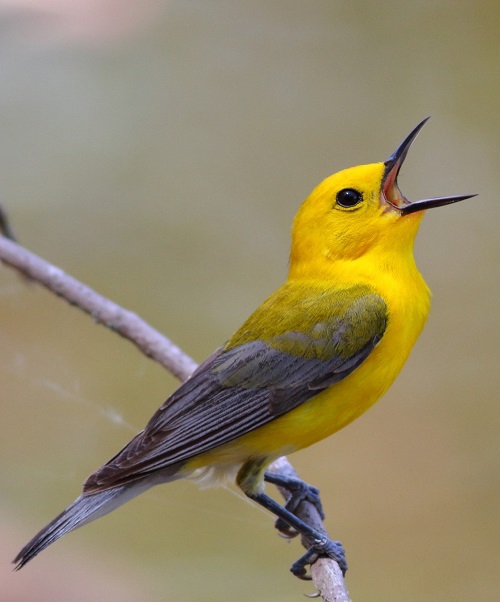 Sheltered Valley/Pine River Rd./FR 2182 (Forest Co.), Forest County, WI, US - eBird Hotspot
Sheltered Valley/Pine River Rd./FR 2182 (Forest Co.), Forest County, WI, US - eBird Hotspot
Habitat: Hemlock-Hardwood Forest, Conifer Bog, Northern Hardwood Forest, Willow/Alder Swamp.
Best Birds: Winter is the best time to find Red and White-winged Crossbill, Pine Grosbeak, Pine Siskin and Common Redpoll. Common Raven are always present as well as woodpeckers, jays, and Red-breasted Nuthatch. Searching the conifer bogs may yield Golden-crowned Kinglet and Brown Creeper.
Hiking the conifer swamps in rubber boots may increase the odds of finding resident boreal birds, but birding from the road can succeed as well. Spruce Grouse are detectable by ear in late April and May during their display season, as well as in fall and early winter when they come to the road in the early morning for grit. Canada Jay are sometimes seen in late fall, winter, and early spring, before their nesting season begins in March and April. For Black-backed Woodpecker look near the edges of conifer swamps where there are debarked spruce, tamarack, and jack pine. Boreal Chickadee are in the swamps with thick stands of Black Spruce.
On a late May or early June morning there is a varied bird chorus of drumming Ruffed Grouse, yodeling Common Loon, flycatchers, thrushes, sparrows, and warblers. Pine River bridge is a great place to take in the dawn chorus. Uncommon species like Olive-sided Flycatcher and Cape May Warbler are present there every year along with Alder Flycatcher, Blue-headed Vireo, Veery, White-throated Sparrow, and Magnolia Warbler. A lucky birder may see a Northern Goshawk fly over. This is also the most reliable spot for Black-backed Woodpecker.
Slowly walk the road through Giant Pine Bog and Kimball Creek Bog early in the morning for Spruce Grouse, Yellow-bellied Flycatcher, Boreal Chickadee, Ruby-crowned Kinglet, Lincoln’s Sparrow, Palm and Nashville Warbler and Hermit Thrush. Wolf Lake is usually rewarding with mixed conifer breeders such as Blue-headed Vireo, Winter Wren, Northern Parula, Blackburnian and Magnolia Warbler.
In the upland areas between the bogs the breeding birds include Ruffed Grouse, Black-billed Cuckoo, Broad-winged Hawk, Yellow-bellied Sapsucker, Pileated Woodpecker, and Black-and-white, Mourning, Chestnut-sided, Pine, Black-throated Green and Canada Warbler.
Directions: 34 miles northeast of Rhinelander. Forest Road 2182 is also called Pine River Road east of the intersection with Giant Pine Rd/FR 2414 and is called Sheltered Valley Road to the west. It extends 13 miles from Hwy 55 at its east end to Military Road at the west end with several spots along the way to explore for boreal species. About 5.25 miles west of Hwy 55 is the Pine River crossing (45.83163, -88.91738). The Giant Pine Bog straddles FR 2182 starting 0.1 mi west of the intersection with Giant Pine Rd., (45.81798, -88.96017). One half mile further west is another opening at the Kimball Creek Bog, (45.81891, -88.98076). Just east of the intersection with FR 2176 is the Furbush Creek Bog. Continue west to reach Wolf Lake, (45.81517, -89.02175).
Giant Pine hiking trail is the only defined hiking trail in the area and loops through the Giant White Pine Grove SNA in the heart of the wilderness. There is a small parking area west of Giant Pine Rd. about 3.4 miles south of the intersection with FR 2182.
Site Address & Additional Information:
This 20,000 acre area is the largest wilderness in Wisconsin and via Forest Road 2182 and a network of other roads it is one of the most accessible places in the state to find boreal species, winter finches and breeding warblers, sparrows, thrushes, and flycatchers.
Intersection of Forest Road 2182 and Giant Pine Road, Argonne WI
Giant White Pine Grove State Natural Area - Wisconsin DNR
 October Hotspot of the Month--Sheltered Valley/Pine River Rd./FR 2182 - Wisconsin eBird
October Hotspot of the Month--Sheltered Valley/Pine River Rd./FR 2182 - Wisconsin eBird
Headwaters Wilderness, stelprdb5176630.pdf (usda.gov)
Carl Schroeder, Tom Prestby

